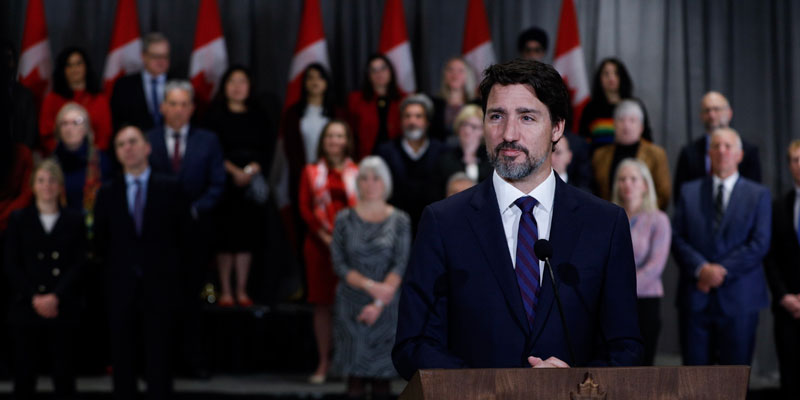Canada lags behind most industrialized countries on key economic, fiscal indicators

The Trudeau government has generally favoured relative comparisons of its performance (i.e. how we rate versus other countries) rather than historical comparisons. Recent data from the International Monetary Fund (IMF) indicates that, among 35 industrialized countries in 2020, Canada’s economic and fiscal performance has been relatively poor.
For example, the IMF expects Canada (provincial and federal governments) to accumulate more debt in 2020 than any other industrialized country—specifically, that Canadian governments will borrow the equivalent of 19.9 per cent of GDP. This is more than 46 per cent higher than the average (9.3 per cent) for all 35 industrialized countries.
Part of the explanation for deficits in any recession is that government revenues fall in lockstep with the economy. However, the COVID recession has resulted in unprecedented spending by governments in Canada, mostly by Ottawa. Federal government spending, for instance, is expected to increase by 68.9 per cent in 2020-21, from $350.8 billion in 2019-20 to $592.6 billion in 2020-21.
As a result, the IMF expects Canada to have the sixth-largest government sector of any industrialized country with all-government spending in 2020 expected to reach 57.3 per cent of our economy. Only France, Belgium, Finland, Italy and Austria rank higher than Canada. Tellingly, pre-recession (2019), Canada ranked in the middle of the pack for size of government—18th of 35 countries with all-government spending representing 41.2 per cent of the economy.
Part of the explanation for the pronounced increase in government spending in Canada—again, largely from Ottawa—is that the federal government consistently demonstrates a preference for expediency rather than effective and targeted assistance to Canadians in genuine need.
A recent study estimated that federal government spending on recession-related initiatives could include as much as $22.3 billion in poorly targeted assistance. The estimate included up to $11.8 billion in Canada Emergency Response Benefit (CERB) payments to nearly one million young people (aged 15 to 24) living at home with their parents (as dependents) in households with incomes of at least $100,000 (2019), up to $7.0 billion in CERB for spouses (secondary earners) in families with at least $100,000 in income, $1.6 billion in Canada Emergency Student Benefits (CESB) for students living in families (as dependents) with at least $100,000 in household income, and $1.4 billion in onetime payments to seniors whose income was high enough that they were ineligible for the Guaranteed Income Supplement (GIS), which is restricted (or targeted) to low-income seniors.
The heightened debt-financed spending by governments has not, however, translated into better economic results in 2020. Among the 35 advanced economies covered by the IMF report, Canada is expected to have the 11th worst contraction in the economy (-7.1 per cent).
Canada’s performance on unemployment is even worse, ranking fourth-highest of any industrialized country with an expected rate of 9.7 per cent. Only Greece, Spain and Italy fare worse, and Canada’s expected unemployment rate is well above the average for industrialized countries (7.2 per cent).
Australia is an interesting comparison because of its similar economy, history and culture. Its performance is markedly better than Canada. It’s expected to have the 6th smallest contraction in its economy in 2020. It ranks 12th in the size of its all-government borrowing for 2020 with just over half the level of indebtedness in 2020 as Canada. And it remains a comparatively smaller government country, ranking 27th for the size of its government spending relative to its economy.
The comparative data from the IMF for 2020 shows Canada underperforming compared to other industrialized countries in terms of the economy and government finances. These insights and lessons from other successful countries such as Australia should inform our governments on how best to proceed as they prepare their financial plans for 2021 and beyond.



